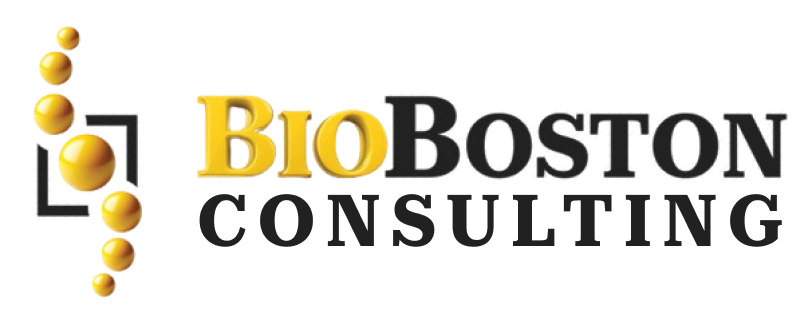In the life sciences industry whether pharmaceuticals, biotechnology or medical devices—moving from a successful lab or pilot-scale process into full manufacturing (or from one site to another) is a critical but complex step. That step is known as Technology Transfer. At BioBoston Consulting, we help clients execute technology transfer with rigor, compliance, and speed.
What is Technology Transfer?
Technology Transfer (often abbreviated “TT”) refers to the structured, systematic process of transferring knowledge, methods, processes or technologies from one location, team or stage (for example R&D or pilot scale) into another (for example commercial manufacturing or a different site).
Key elements of a technology transfer include:
- Process and analytical method transfer — ensuring that the developed process works at scale.
- Equipment qualification and validation at the receiving site.
- Documentation and SOP alignment (standard operating procedures, batch records, process descriptions).
- Knowledge sharing and training of personnel at the receiving site.
- Regulatory compliance and risk assessment — ensuring the transferred process meets regulatory requirements (e.g., GMP, FDA, EMA).
Why is Technology Transfer Important for Your Organization?
For companies in life sciences, pausing at development is not enough—successful commercialization or scale-up demands that the technology works in production. Here are key reasons why a strong technology transfer process is vital:
- Regulatory Compliance
Without proper transfer documentation and validation, you risk non-compliance with regulatory standards (FDA, EMA, GMP) once you move to manufacturing or site changes. - Product Consistency & Quality
When you transfer a process, you must ensure that quality attributes, safety and effectiveness are preserved. Inconsistencies post-transfer lead to defects, recalls or delays. - Operational Efficiency and Time to Market
Effective transfer reduces delays, re-work, wasted batches and start-up costs. A poorly managed transfer can slow commercialization or cause unexpected issues. - Risk Mitigation
From differences in equipment, site infrastructure, processes and regulatory expectations, the receiving unit may face many risks. Structured tech-transfer helps identify and mitigate these risks early. - Strategic Growth and Scalability
Whether expanding manufacturing capacity, switching sites or licensing technology, technology transfer is a foundational step that supports business growth and commercialization.
How BioBoston Consulting Helps You with Technology Transfer
As your One Stop Solution for Life Sciences, BioBoston Consulting delivers end-to-end technology transfer support tailored to your product, process and regulatory environment. Our services include:
- Transfer Planning & Strategy: We help define the roadmap: what to transfer, when, how, with milestones and success metrics.
- Gap Analysis & Risk Assessment: We assess both sending and receiving units, infrastructure, documentation and regulatory readiness.
- Documentation & Knowledge Management: We align SOPs, batch records, process descriptions, training materials and ensure knowledge capture.
- Process and Method Validation: We support equipment qualification, analytical method transfer, process performance qualification to ensure reproducibility.
- Cross-Functional Coordination: We work across R&D, manufacturing, QC/QA, regulatory and operations to ensure alignment.
- Regulatory Support: We ensure that the transfer meets local and global regulatory expectations (GMP, FDA, EMA) and support submissions or site change notifications if needed.
By engaging BioBoston Consulting, clients benefit from structured processes, reduced risk, faster scale-up and a smoother handover from development to manufacturing.
Who is Responsible for Technology Transfer?
Ownership of technology transfer typically lies with leadership roles that span development/manufacturing interfaces. Common responsible persons or functions include:
- Technology Transfer Manager or Manufacturing Technology Manager: Focused purely on transferring processes.
- Quality Assurance (QA) Lead or Quality Systems Manager: Ensures that transfer meets quality and regulatory compliance.
- R&D/Process Development Lead: Supplies the process knowledge, analytical methods and supports the handoff.
- Operations/Manufacturing Manager at the receiving site: Responsible for adopting the transferred process.
- Regulatory Affairs Lead: Ensures that all regulatory aspects of the transfer (e.g., change control, site change notifications) are addressed.
Effective technology transfer is truly a cross-functional effort, with close collaboration between R&D, manufacturing, quality, regulatory and operations teams.
Benefits to the Client
By partnering with BioBoston Consulting for technology transfer, your organization can expect:
- Streamlined transition from development/pilot to full scale manufacturing with fewer surprises.
- Improved reproducibility and quality of your product in the new environment or site.
- Shorter time to market, thanks to smoother handover and fewer delays.
- Reduced operational risk and cost from less downtime, fewer deviations and less re-work.
- Enhanced regulatory confidence, demonstrating readiness, control and compliance to regulators and auditors.
- Scalable manufacturing footprint, enabling growth, site expansions or licensing with confidence.
Get Technology Transfer Right with BioBoston Consulting
Don’t let the complexity of transferring your innovation become a bottleneck — let it become a competitive advantage. With BioBoston Consulting as your partner, you gain access to deep experience, structured methodology and regulatory-savvy support that ensures your technology transfer is efficient, compliant and future-ready.
📞 Contact us today to schedule a consultation and see how our Technology Transfer services can accelerate your product journey.

